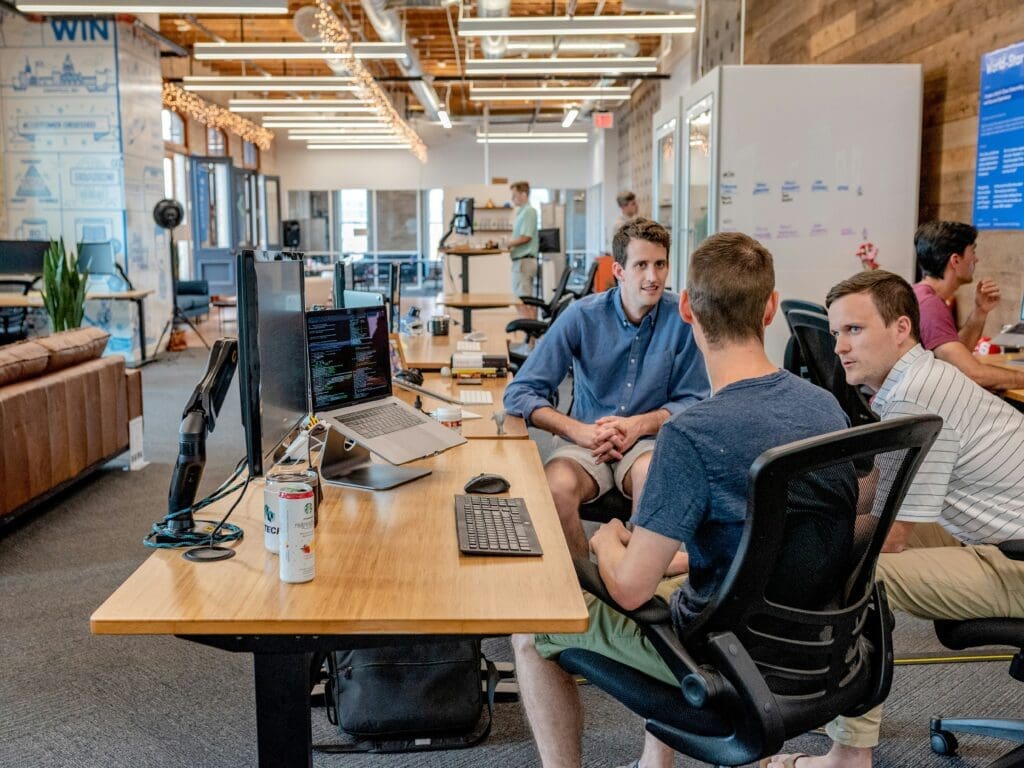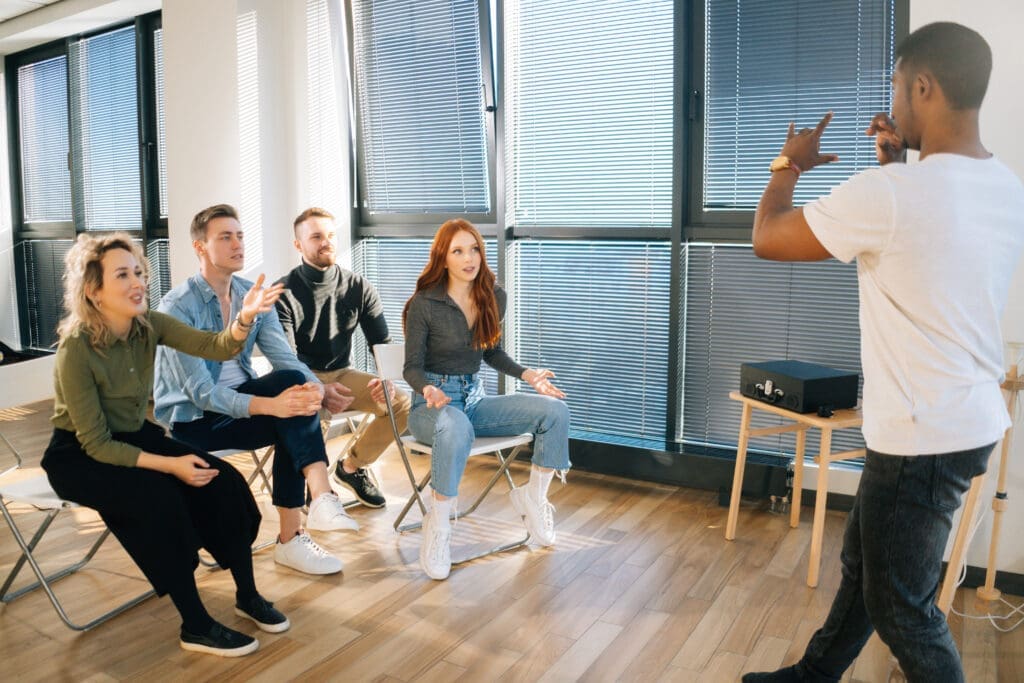As the times change, it’s never been more important to build an effective team. You might be wondering, how do I measure effectiveness? How do I tell what true effectiveness is, and how do I judge my team based on their merits and not my personal or professional expectations?
Any team’s effectiveness can be loosely defined by their ability to accomplish their goals and objectives laid out by either themselves or an authority. To be properly effective, teams need engagement, focus, productivity, and clarity. Building an effective team is crucial to business, and creates longstanding value and morale that drives success.
The best way to judge effectiveness is to gain a sense of your team’s total engagement, synthesis, and ability. Profit is a result of effective teams, but you cannot judge their abilities on profit alone. A team might be cranking out profit and making progress while coming apart at the seams.
We’ve outlined 6 easy ways to measure team effectiveness here, giving you simple methods by which you can truly judge your team’s effectiveness.
Here Are Our 6 Easy Ways to Measure Team Effectiveness:
- Create Objectives
- Measure Productivity
- Observe Group Dynamics
- Measure Employee Satisfaction
- Meet One on One with Team Members
- Review Customer Feedback
1. Create Objectives

In order to build effectiveness out of the gate, you need to know the merits and output of each individual on the team. Success can be measured in the sum total of a team’s ability, but it’s important to know the unique strengths and weaknesses of everyone who is a part of it. One way to measure this type of individual effectiveness is to manage via objectives. Managers can assess any single employee’s output and how they are contributing to the whole, by seeing how they engage with company strategies, concepts, and goals.
To enact this method, you need to provide set goals to every individual at the start of the project so that you have a metric by which to measure their contributions. You can utilize evaluations to help align your project goals with the individuals and their experience, but you can also engage in regular meetings weekly or bi-weekly to have team members openly discuss progress, issues, motivations, and more.
Creating firm (and meetable) objectives for the individuals on their team will give them clarity and insight, and it will give you and your managers the ability to see who needs what in the long term.
2. Measure Productivity

One of the best ways to make sure a team is effective is to measure their productivity and output along the way—if your team is productive (i.e. meeting their goals, working communally, increasing profit), then they will become effective.
Define productivity for you and your team early on so that they know what goals to meet to satisfy what you are looking for. There are questions that can be posed, such as ‘What is our end goal?’ ‘When should we achieve this?’ ‘How do we best achieve this?’ Clearly lay out the metric of your desired productivity, to decrease your employees feeling as though the goals they are meeting are up in the air. You can define goals by time, profit, sustainability, etc.
You can attempt to judge productivity by dividing the total revenue of a project by the number of employees to help evaluate the amount that your team is bringing in. This will help you calculate total costs, and see the inarguable number value of each employee on your team. You can also judge the total cost of your workforce by the sum of your benefits package, compensation, tools, and more. Finally, you can determine the ratio of effectiveness by calculating your profits against the amount spent on the individual project.
There are a number of ways to determine the productivity of your team, and you may have to adopt new ideas and concepts per project. Remember, there are uncountable successes and flaws with every project depending on the time of year, team makeup, and more, so give yourself time to gain an accurate look at the productivity of your team. You should always be looking for new ways to improve productivity, whether it’s through team-building exercises or mutual engagement.
3. Observe Group Dynamics

This might seem obvious, but observing group behavior is one of the best tells to figure out how well a team is working together. Your team meetings during a project should be peppered with exciting discussion, effective brainstorming, camaraderie, consistent engagement, and the incubation and inclusion of new ideas. Creativity should be consistent and constant. If you think about it, positive group interactions build respect, trust, motivation, and admiration.
You should immediately notice the building ineffectiveness of a team that unites without an agenda and has no clear goals on how to spend their time or resources. The team might appear bored and lethargic. They may even be outright rude or passive-aggressive, and the team won’t work well together, they’ll arrive late, and be prone to distractions. This also might mean that you lose out on the good team members who will be afraid or unwilling to speak up and share impactful ideas. Groups like this often need clear leadership, direction, and motivation. The team should feel safe and productive, and you’ll need to get to the root of the problem by figuring out which individual or individuals are contributing to the lack of morale.
Group dynamics can be observed over time—by you, managers, or project leaders. It shouldn’t take much sleuthing to figure out if your team has good dynamics or bad ones, and you’ll immediately notice the effectiveness or lack thereof in your team.
4. Measure Employee Satisfaction

Satisfied employees will increase team effectiveness by sticking around, reducing your turnover rate, and building a “glue” that will bind your team through high times and low. Satisfied employees are much more effective in every situation because they are committed to your company, motivated by shared goals and driven by the ambition between themselves and their coworkers.
You can measure employee satisfaction more easily than anything else: ask them. Employee satisfaction is built of many factors, from competitive pay scales to good benefits to a positive working environment. You can dole out surveys that ask employees what they’re happy with or dissatisfied with, and you can hold regular meetings where you push transparency and positivity in the office. Employee satisfaction is more important these days than it ever has been, since turnover rates are high and the extended pandemic has neutered a lot of plans and aspirations.
Ask your employees how they feel about your workplace’s inclusiveness and positivity. Would they bring a family member in? A friend? Are they satisfied with the business and the team? Ask them questions on a personal level, and if they’re having a hard time right now, reach out to them. You need to gain insight into the personhood of the individuals on your team, and structure the team around their needs, wants, and goals. The satisfaction of your employees is of remarkable importance to the overall structure of your team and company, and employee engagement has never been more necessary than right now.
5. Meet One on One with Team Members

Status updates are a fantastic way to measure team effectiveness, especially if your managers are regularly meeting with employees on an individual level. During these meetings, you or your managers should specifically ask about team projects. How does the person feel? Outside of goals, what are their impressions of the trajectory of the project? You need to make sure individual members feel satisfied with their roles, progress, and place.
A good rule of thumb is to meet up with your team members every two weeks. This way you can measure where everyone is at, how they feel about the project, and if they see any potential problems. You can stagger these meetings so that you’re having one every day or every other day, that way even though the individuals are only on bi-weekly update schedules, you’re learning new things constantly. This way you can determine what is working and what isn’t, and if people are following up with their tasks.
6. Review Customer Feedback

At the end of the day, what you do is please your clients. Measuring client satisfaction is the best way to measure your team’s total effectiveness across any project. If your client is happy with what you did—whether it’s a product or a service—this means that your team was effective in meeting its goal, providing the result, and understanding what the customer needed.
To measure this, you can review customer feedback through surveys or ask your clients directly. You can meet with your customers and ask for pointed, detailed feedback. In most cases, your clients will not have the time or inclination to give you exactly what you need, so you will have to parse out their responses to gather your team’s total effectiveness. This is why surveys are the most effective, and you can gather the team to peruse the feedback together.
There are many types of questions you can put into a feedback survey, such as asking about the quality of the product and the level of personal satisfaction. Gaining an overall look into customer satisfaction will help your team in the long run, and if your client is happy it will increase morale and effectiveness in your team.
Customer loyalty is another great way to measure effectiveness. When customers return—or when customers suggest you to new clients—you can gather that your team did a great job. This score is a way for you to build your company as well, as the more return customers you get along with new clients, the more your model and profit will increase.
In Conclusion, Seek Togetherness

Any good manager will be able to judge the effectiveness of their team and adapt new methods and strategies to them over time. While measuring ongoing effectiveness might not be immediately reliable, the long and short is to gain a unique and complex understanding of the people that make up your teams and company. You can then judge their productivity, see their effectiveness, and find where needs should be met.
One of the best ways to improve effectiveness is through team building to improve group dynamics! Build engagement by allowing your employees to let off steam, get to know one another, and have fun!
If you can build your team up together, success is in your future! Effectiveness is all about trust, foundation, and morale, and remember you need to build people up in order to get the results that you want.




